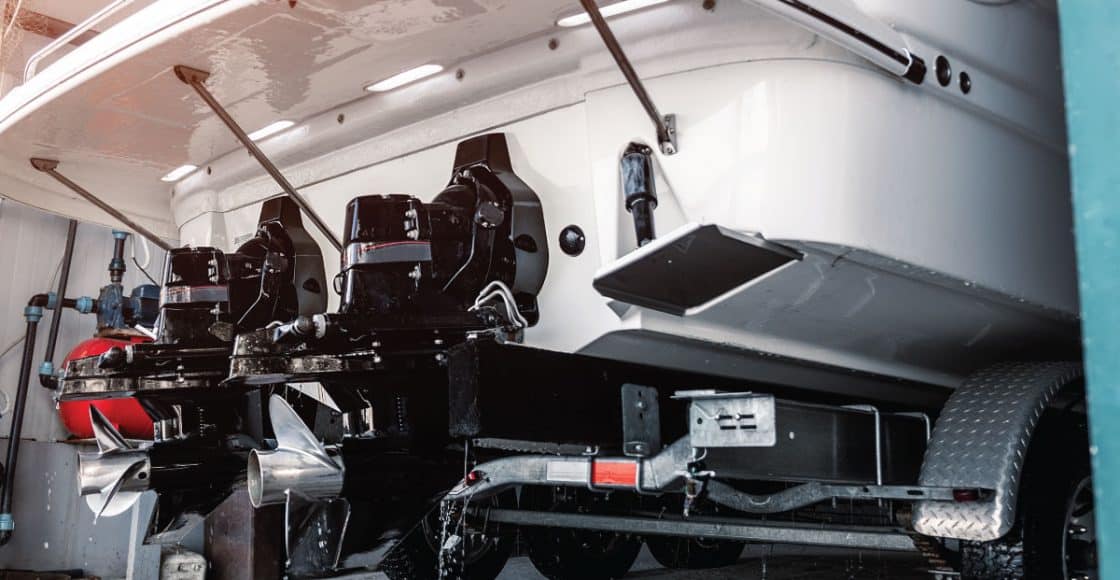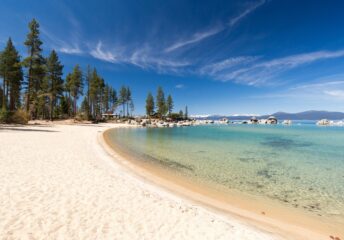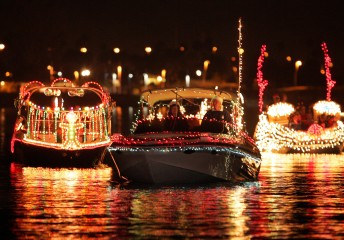Trimming a Boat in 3 Simple Steps
Last Updated on July 31, 2023 by Boatsetter Team
No matter what kind of boat you rent on Boatsetter, the vessel’s ride, performance, and fuel efficiency are all important considerations while you’re out enjoying a day on the water.
Most vessels with planing hulls include systems that allow the captain to adjust the boat’s ride and performance by changing the angle of the hull in relation to the water.
This is known as trimming a boat, and in this post, we’ll go over the three simple steps to trimming a boat.
- Attitude adjustments
- Trimming it up a bit
- Rock & roll
1. Attitude adjustments
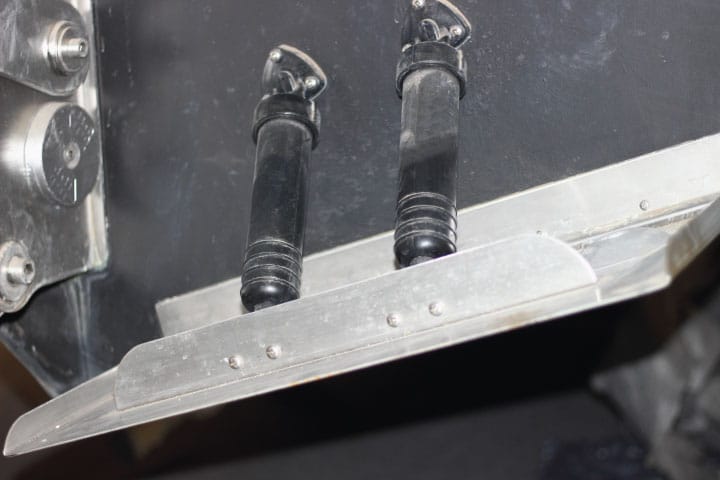
Trimming a boat can change how the vessel rides and can also center the vessel from port to starboard if more passengers sit on one side or the other.
The idea of trimming a boat is often mysterious to new captains. Even boaters with more experience can sometimes struggle with learning to use trim adjustments properly.
The two most common systems used to adjust a boat’s trim settings are trim tabs and drive trim. Some boats have both available to help the boat perform at its best, while others only have one.
Trim tabs are flat metal plates found at the aft port and starboard corners of the vessel and are extended by hydraulic cylinders. Trim tabs can be moved individually or together to change the vessel’s angle in relation to the water forward and aft or side to side.
Drive trim is the angle of the sterndrive or outboard engine in relation to the transom. Trimming the sterndrive or engine “up” moves the propeller out and away from the transom on an angle until the prop pushes slightly downward as the boat moves forward. This lifts the boat’s bow up until less of the hull makes contact with the water.
Trim tabs and drive trim can also be adjusted in small increments to match the boat’s unbalanced load or water conditions or improve the boat’s performance. Both systems are fairly simple once you understand them, but there are important steps to trim your boat properly.
2. Trimming it up a bit
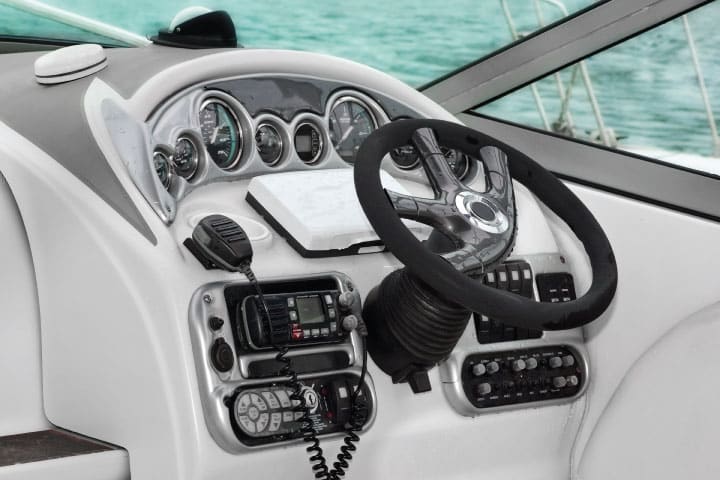
With the ability to only move up or down, drive trim is the easiest of the two to properly adjust. The drive trim is controlled by a button or toggle that is usually found on the shift and throttle control arm or on the dash.
Here is how to adjust drive trim:
- It’s important to start with the sterndrive or outboard engine all the way down.
- Increase the boat’s speed until it’s up on plane.
- Once on the plane, lift the drive or outboard slightly by tapping the “Trim Up” button.
- When you pull the throttle back to idle, trim the drive or engine back to the Down position.
As the drive or outboard engine lifts up, the bow will also lift until the boat picks up a little speed and the ride smooths out. This will improve the ride and also increase fuel efficiency.
3. Rock & roll
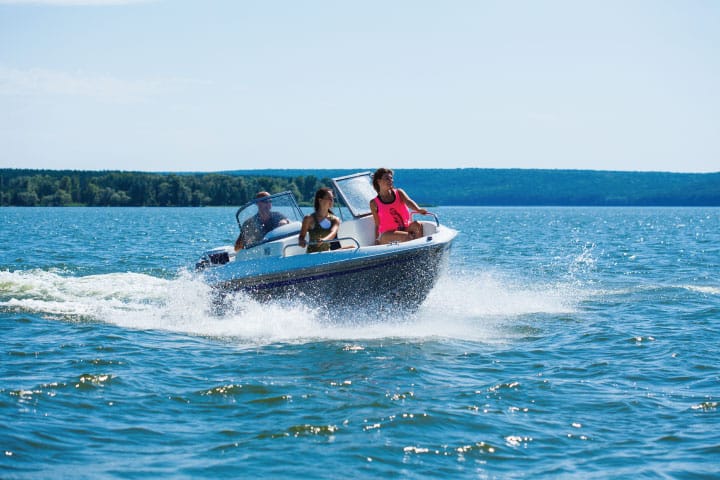
Trim tabs can be a little more challenging to learn, and new captains often struggle with their proper use. The trim tab rocker switches can usually be found side by side on the dash and are labeled Up and Down.
There are two ways to adjust trim tabs. If the boat lists (or leans) to one side, you can use the tabs to level it out. Here’s how:
- Bring the boat up to cruising speed.
- Use small adjustments to change the boat’s angle with 1-second “taps”.
- If the boat is leaning to starboard, tap the port side button Down.
- If the boat is leaning to port, tap the starboard tab button Down.
Once you stop the boat, the tabs should be put back in the up position. If you are running with a heavier load, here’s how to use trim tabs to help get the boat up on plane:
- Before throttling up, push both Down buttons for 10 seconds to extend the tabs.
- Throttle up to get the boat on plane.
- Use small adjustments to bring the tabs Up again until the boat’s ride smooths out.
Properly trimming a boat can improve the ride in rough water, decrease the time it takes to get on plane, increase the boat’s speed, and improve fuel efficiency.
These are all important reasons to learn how to properly trim a boat before you leave the dock on your next Boatsetter boat rental and head out for a great day on the water.
Want to get behind the helm?
If you’re getting behind the helm, make sure to read up on boating guides in preparation for your upcoming trip. Here are a few posts we recommend for you:
- 7 Common Boating Fails, and How to Avoid Them
- Boat Fuel Consumption: 5 Tips for Measurement, Efficiency, and Savings
- Boat Hulls 101: Complete Guide to Boat Hull Types, Shapes, and Designs
Like what you read? Find more content like this at Boating Basics.
About us
Boatsetter is a unique boat-sharing platform that gives everyone— whether you own a boat or you’re just renting — the chance to experience life on the water. You can list a boat, book a boat, or make money as a captain.
Rent, Charter, Share— Only at Boatsetter

Chuck Warren fell in love with boats at 9 years old while helping to restore his grandfather’s 1939 44-foot Elco cruiser. A lifelong boater, Chuck has experience operating large and small vessels on the waters of the Atlantic, Gulf of Mexico, Caribbean, and the Great Lakes.
During his 35-year marine industry career, Chuck has been the driver for several offshore powerboat racing teams, the chief engineer aboard a Caribbean research and salvage vessel, captain of a Florida Keys sunset cruise, and more.
Today, Chuck is a boating industry writer, copywriter, and captain who lives on his 40-foot boat in the summer when he isn’t delivering vessels around the Great Lakes or teaching new boaters to drive. Winters are split between the West Michigan lakeshore and wherever his travels take him.
